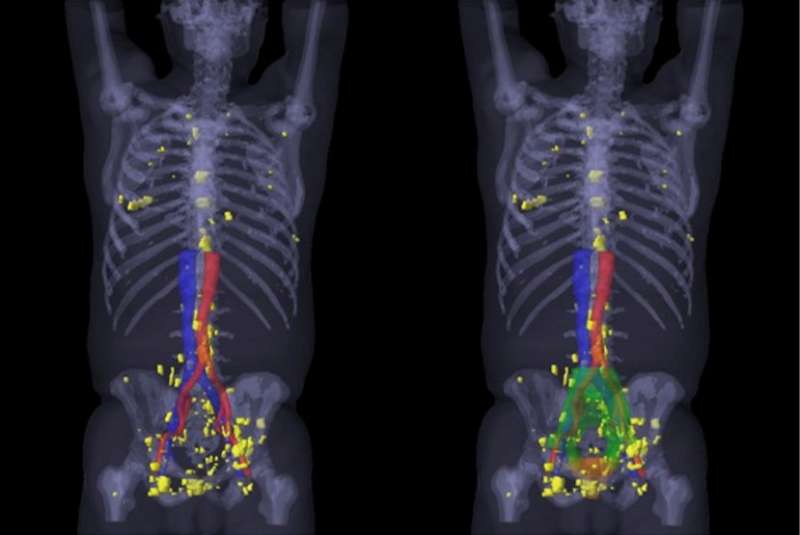PSMA PET/CT visualizes prostate cancer recurrence early, impacts radiation therapy

A nuclear medicine scan may locate prostate cancer recurrence after radical prostatectomy early after disease recurrence and could help guide salvage radiotherapy, according to new research from the University of California Los Angeles (UCLA). The study, which utilizes PET/CT with gallium-68 prostate-specific membrane antigen (68Ga-PSMA-11), is documented in the featured article in the February issue of The Journal of Nuclear Medicine.
Prostate cancer biochemical recurrence occurs in 20 to 80 percent of patients within 10 years after radical prostatectomy and is difficult to treat. Salvage radiotherapy is the main option for treatment, but the imaging modalities currently used are not sensitive enough to identify the location of recurrence until it is too late, leading to a "best-guess" approach for targeting the radiotherapy.
"Based on European data, we believe that PSMA PET/CT, an imaging technique that is not yet approved by the U.S. Food and Drug Administration, is sufficiently sensitive to detect and localize the recurrent prostate cancer early enough to potentially guide salvage radiotherapy," explains Jeremie Calais, MD, at UCLA. "The first sign of prostate cancer recurrence is a rising PSA. For salvage radiotherapy to be successful, it should be initiated before the PSA rises above 1 ng/mL, and ideally, closer to 0.2 ng/mL or lower."
The study included 270 well-documented patients from databases established at four institutions (UCLA and three in Germany: Technical University of Munich, Ludwig-Maximilians-University of Munich, and University of Essen). All patients had a biochemical recurrence of prostate cancer after radical prostatectomy but had not received prior radiotherapy. They underwent PSMA PET/CT at a serum PSA level of less than 1 ng/ml.
Nearly half (132 patients or 49 percent) had a positive PSMA PET/CT, and 52 (19 percent) had at least one PSMA-positive lesion that was not covered by the consensus clinical target volume (CTV). The two most common PSMA PET-positive lesion locations outside the consensus radiation fields were bone (23/52, 44 percent) and perirectal lymph nodes (16/52, 31 percent).
Calais points out, "Salvage radiotherapy is only curative if recurrent disease is completely encompassed by the radiotherapy fields. Therefore, in almost 20 percent of these patients, the addition of PSMA PET/CT would have a potentially major impact on the outcome of salvage radiotherapy."
He elaborates, "Visualizing sites of prostate cancer recurrence accurately, and early enough to guide therapy, enables truly precision radiation therapy. This is, in fact, the definition of individualized medicine. We believe that PSMA PET/CT imaging will ultimately be incorporated into the standard of care for prostate cancer patients with biochemical recurrence."
Toward that end, the suggested next step is a randomized imaging trial of salvage radiotherapy with or without PSMA PET/CT to investigate further its potential beneficial impact on treatment outcome.
More information: Jeremie Calais et al, 68Ga-PSMA-11 PET/CT Mapping of Prostate Cancer Biochemical Recurrence After Radical Prostatectomy in 270 Patients with a PSA Level of Less Than 1.0 ng/mL: Impact on Salvage Radiotherapy Planning, Journal of Nuclear Medicine (2017). DOI: 10.2967/jnumed.117.201749


















